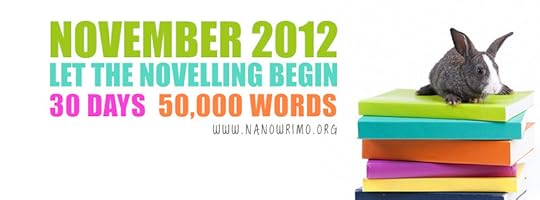Week Two NaNoWriMo Blues? No Problem!

With NaNoWriMo here, everyone is scrambling to line up their plots before November, or they were last week. Now we’re not quite to the notorious Week Two that claims so many WriMos every year. In fact, I’ve been a victim of Week Two Blues before, myself. Usually, what needs to happen is I need to stop and do some more plotting, since I don’t plot that much ahead of time. So, in anticipation of the Week Two Blues, we’re going to talk about my newest plotting craze.

If you listen to Writing Excuses at all, you’ve probably heard Dan Wells speak about the Seven Point Plotting System. While he’s not the originator of it (he freely admits he swiped it from a Star Trek RPG book), he is almost more famous for this plotting system than his own books.
As a pantser, the word plotting tends to give me hives. I can do a certain amount of preparation, mainly because I’ve trained myself to do it, but once I get past a certain detail, it doesn’t work out and I can’t write. That’s why I’ve learned to LOVE the Seven Point System. I can do a treatment of the first 10-15k and then I can stop and fill in these seven points. It’s enough detail to keep me writing, and not enough detail to derail me completely.
So there’s five videos on YouTube and all five take just under an hour. I listened to them while I was coding a website for school.
You should definitely go watch those videos, but in the meantime, let me break it down to you.
The Seven Points
Hook
Plot Turn 1
Pinch 1
Midpoint
Pinch 2
Plot Turn 2
Resolution
The temptation to go in the order of these points is overwhelming for my OCD, but that’s not how you work them. I suppose you could but I’ve found this order below actually helps me more.
Protagonist/Antagonist – I actually work on these two concurrently. They’re often very similar to each other or they FOIL each other in my books, so I usually want to be able to go back and forth between the two.
Resolution – This is the peak of the writing structure. The climax. It’s not the end of the book. it’s just where everything leading up to this point meet each other. All subplots will converge here as well.
Hook – Here is where you have to “hook” the reader. This is the opposite of the resolution, found in the beginning of the story. Here is where you get your readers invested in the story with your hook or risk them putting your book down after the first few pages. This is probably the most fun part of the book for me.
Midpoint – Here, your characters will move from reaction into action. This is the point where the character has to change something, fix something, or make something happen.
Plot Turn 1 – This is the change from normal world into special world. The character’s world changes, due to meeting someone new, or confronting a new idea, or learning a secret.
Plot Turn 2 – This is where the character obtains the final item/idea to do the thing she/he must in the Resolution. Yes, it is vague, but a lot of times, it’s the last piece of the puzzle before he can move on to victory. It’s the point in almost every fantasy where hte main character realizes “The power is in me!”
Pinch 1 – Pinches are something I’m struggling with still. I get them confused with plot twists. A pinch is when something goes horribly wrong and forces characters into action. For this first pinch, often times the villain is introduced here. Maybe a tenuous peace is destroyed here. A leader is assassinated.
Pinch 2 – This is just after the midpoint, when the characters are typically just starting to act or are at their lowest. You have to pinch more here to add more pressure until the situation is hopeless. Maybe the mentor dies, the Plan A fails, the villain has won the day (or so it appears). That gets you ready to tackle this last section of the book.
The great thing about this system is that it works for subplots too. Just follow the same method. Once you do that, you can interweave them into your plot to give your novel the right pacing and line them up so that the Resolution is as powerful as it needs to be.
There’s not a lot of plotting methods that work for me, and honestly, I’ve changed my process for every book, but this one has stuck through two different books and maybe a third by the end of this November.
What’s your favorite plotting method? Are you a pantser like me? Afraid of plotting? Love plotting? Talk to me, and tell me all about your process!







